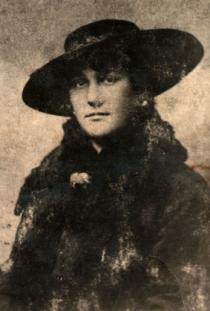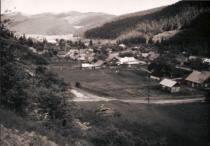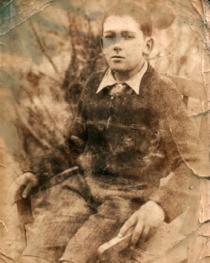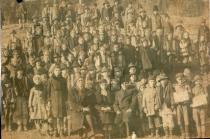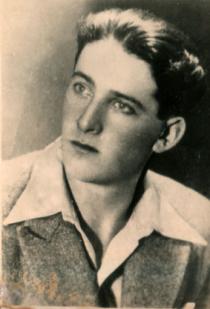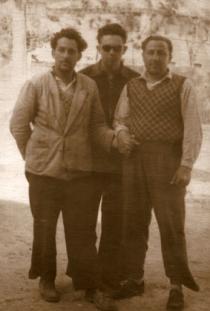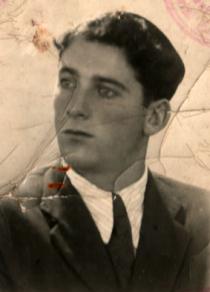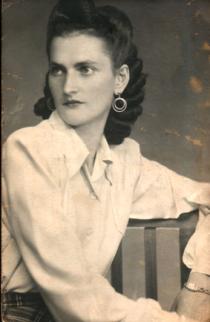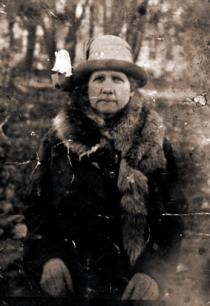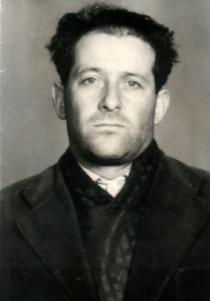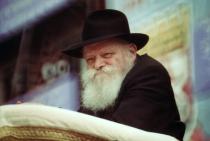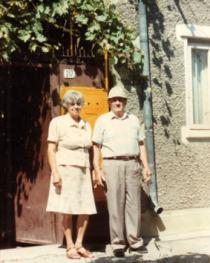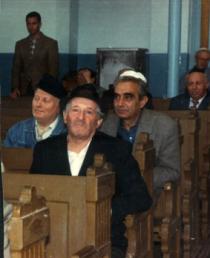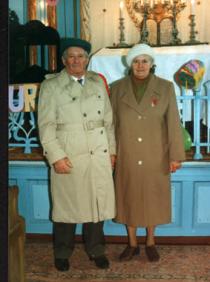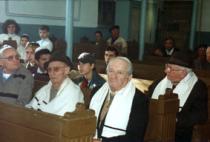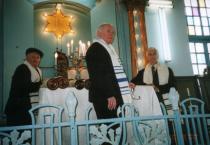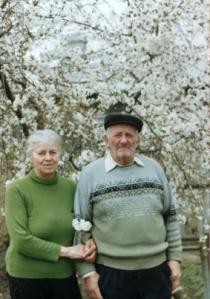A photo from my native village, Sipot, Storojinet County.
I don't know when my grandfather, Haim Eiferman, and his wife settled in Sipot [Ed. note: Nowadays Sipot is called Dolishniy Shepot and is part of the Chernivtsi Region, Ukraine.], Storojinet County, Bukovina, which belonged to Austria-Hungary back then. My mother, Gisela Eiferman nee Weiner, was born in 1904 in the village of Sipot, just like my father. I don't know how they met. They got married in the early 1920's and I was born in 1925. I was an only child.
We lived in a large house made of wood beams, like is the custom in the mountains. It had 7-8 rooms. We had a kitchen, a pantry, a large cellar, a henhouse and a stable for the cattle. We grew two cows, a pair of horses and many chickens. Nowadays the village has new houses covered in tin plates. Back in our days, we used shingle. Our furniture consisted of the regular pieces of our time: wardrobe, bed, small couch. Pictures hung on the walls, because Jews don't have icons and cult artifacts to display. The timber yard had a power generator, but few houses were connected to it. Our family used gas lamps. We didn't have plumbing - our water supply was a spring nearby. There were many small tributaries of the River Siret in the area and one of them passed by our house.
Our neighbors were Ukrainians; they were nice people. We spoke in their native language with them. Sipot and Banila [today Banilov] were villages of Ukrainians. There were also villages of Romanians in the vicinity - like Krasnailski [today Krasnoilsk]. The region had been under the Austrian administration until 1918. It was only in 1920 that they started to use Romanian as the official language. In out village, the gendarme, the priest and the teachers were Romanian. The mayor's office had Romanian and Ukrainian employees - but the latter could speak Romanian too.
The village had a Christian-Orthodox church. Ukrainians had basically the same holidays as the Romanians, only they celebrated them 2 weeks later. There were also Adventists, but they were very few. They held a service every Saturday in a private house.
Jews didn't have a synagogue, but they congregated in a prayer house. My parents would go there too. Men would go every Saturday. Women and children would only attend the place on large holidays. Religious marriages were officiated in the nearest town, because the village only had 12 Jewish families; there were many elderly people and very few children, since many families didn't have offspring.

